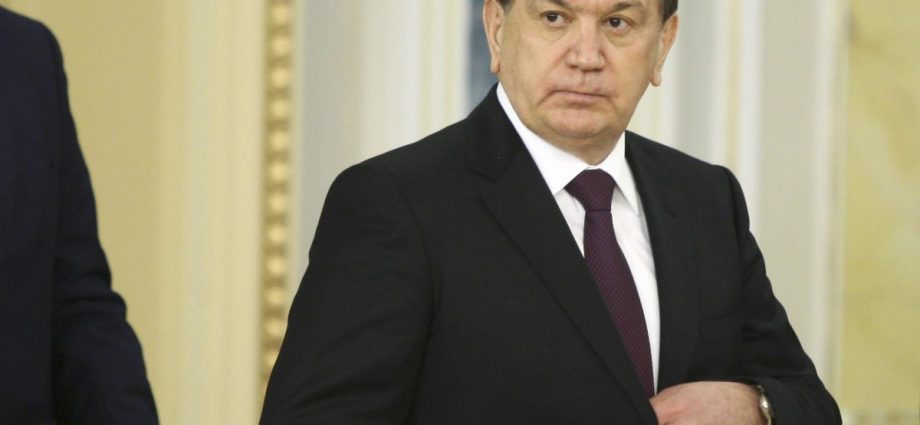
Over the next two days (May 18-19), Presidents Xi Jinping of China, Kassym-Jomart Tokayev of Kazakhstan, Sadyr Japarov of Kyrgyzstan, Emomali Rahmon of Tajikistan, Gurbanguly Berdimuhamedov of Turkmenistan and Shavkat Mirziyoyev of Uzbekistan will meet in person for the first time. They are attending the first China-Central Asia Summit in Xian, Shaanxi province, China.
The summit follows on the heels of the fourth China-Central Asia Foreign Ministers’ Meeting and the first China-Central Asia Meeting of the Ministers of Economy and Trade held last month. To be sure, it represents the beginning of an even deeper collaboration among the countries rather than, as some might assume, just one more diplomatic engagement with little significance.
The six leaders are expected to sign several “big-ticket” political agreements in anticipation of future cooperation across the entire geopolitical and economic landscape of the region.
What’s more, the summit reaffirms that regional multilateralism is full-bodied and that Middle Eurasia has created a working collective diplomatic platform with downstream delivery networks.
Over the past years, the six countries have materialized their respective interests for closer integration, meeting separately and together on multiple occasions on a wide spectrum of socio-developmental and sticky geo-economic issues, including resolution of boundary disputes.
Optimism is in the air throughout the region despite tensions in the neighborhood. To underscore the seriousness of developments, prior to the summit, President Rahmon has visited Kazakhstan and President Mirziyoyev has traveled to Tajikistan, Kazakhstan and elsewhere. Presidents Japarov and Tokayev are in constant contact. Presidents Rahmon and Japarov are working through bilateral issues.
Even the elusive president of Turkmenistan has spread his wings and engaged counterparts across the region; Berdimuhamedov has traveled to China three times in the last 12 months.
And President Xi seems to be ubiquitous, recently traveling to Kazakhstan and Uzbekistan to discuss business rather than squeeze in a few photoshoots on his way somewhere else.
Bilateral and multilateral engagement
At the summit, the various leaders are expected to sign some 20 bilateral and multilateral agreements that will range from trade and investment to cultural exchanges and connectivity, that is, highways, railroads, ports, and digital and transit infrastructure. Regional economic integration will be at the top of the summit’s agenda, with billions of dollars on the table.
Without doubt, President Xi will touch on geopolitical crises and woes such as the Russo-Ukrainian war and Afghanistan, while gamesmanship and inter-regional tensions will be handled behind closed doors. The leaders will not allow troublemakers and killjoys to throw monkey-wrenches into the summit’s agenda.
At a May 16 press conference, as if unable to hide China’s role in the development of the region, Wang Wenbin, China’s Foreign Ministry spokesman, stated with apparent exuberance:
“Over the past decade, we [China and Central Asian countries] have jointly implemented a number of major projects which have benefited the region and its people in various ways.
“The China-Kazakhstan Horgos International Border Cooperation Center and the China-Kazakhstan Logistics Base in Lianyungang have been completed, providing a gateway to the Pacific for Central Asian countries. The Chinese-built tunnel of the Angren-Pap railway line, the longest tunnel in Central Asia [19.2 kilometers], saved local residents the trouble of climbing through the mountains or taking a detour via neighboring countries.
“The China-Kyrgyzstan-Uzbekistan (CKU) highway has become an important international transportation route that runs smoothly through the region’s mountainous terrain.
“Four-fifths of the China-Europe Railway Express trains run through Central Asia. They are a steel caravan for the Eurasian continent. Last year, the total trade volume between China and Central Asian countries hit a record high of $70 billion.
“These tangible outcomes lay a solid foundation for the two sides’ continued commitment to mutual respect, good neighborliness and friendship, mutual support in times of difficulties and win-win cooperation.
“We believe that the summit in Xian, where the ancient Silk Road began, is set to reinvigorate the millennia-old trade route and herald a promising outlook for China-Central Asia cooperation. The summit will contribute to an even closer China-Central Asia community with a shared future.”
While numbers and time frames are hard to verify, Taiwan News reported that “China’s direct investment in Central Asia exceeded US$15 billion by the end of March of this year.. More is in the pipeline.
As I wrote in Asia Times in 2022, “Just as the June 2021 US-led ‘Build Back Better World‘ (B3W) infrastructure initiative turned out to be a flop, so, in all likelihood, will the recently announced (June 2022) US$600 billion joint EU/UK/US plan – ‘Partnership for Global Infrastructure and Investment‘ (PGII) – meet the same fate. The failure of the domestic version of B3W in the United States is well known in Asia.”
Regional integration
The summit may make some surprise announcements such as the further extension of a visa-free regimes between China and Kazakhstan and Uzbekistan (similar arrangements are in the works with the other countries); the signing of a memorandum of understanding to jointly develop an “Air Silk Road“; and the expansion across the region of trade and investment in yuan, especially given the recent jump in trade, between China and the entire region, as David Goldman has reported in Asia Times.
In September 2022, Kazakhstan and China signed a memorandum to allow for the settlement of certain transactions in yuan. The decision to settle in yuan is in line with the Joint Statement of the Shanghai Cooperation Organization’s summit in Uzbekistan last September, wherein countries agreed on a roadmap to widen the use of local currencies in trade.
Besides advancing regional integration, after all is said and done, the China-Central Asia Summit may encourage Brussels and Washington to consider a foreign policy anchored more in realism and common sense than in moralizing and unhealthy gamesmanship. Let’s wait and see.

